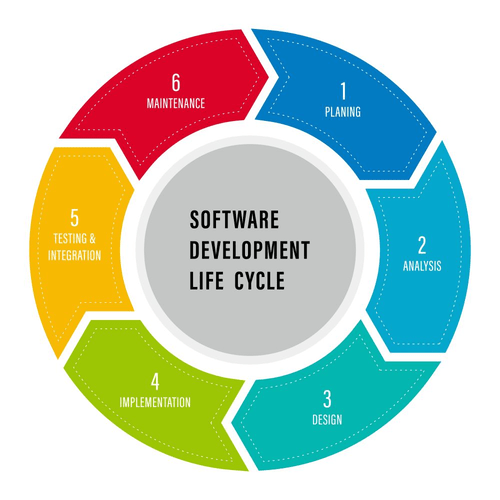At last, the values of the vector and the regulated values are multiplied to be despatched as an output and input to the following cell. The addition of useful information to the cell state is finished by the enter gate. First, the information is regulated using the sigmoid operate and filter the values to be remembered just like the neglect gate using inputs h_t-1 and x_t. Then, a vector is created utilizing the tanh perform that provides an output from -1 to +1, which contains all of the attainable values from h_t-1 and x_t. At final, the values of the vector and the regulated values are multiplied to acquire useful information. The information that is not useful in the cell state is eliminated with the forget gate.
GRU is an LSTM with simplified structure and does not use separate memory cells but uses fewer gates to regulate the move of information. Starting from preliminary random weights, multi-layer perceptron (MLP) minimizes the loss operate by repeatedly updating these weights.
cell. A memory cell is a composite unit, built from less complicated nodes in a particular connectivity sample, with the novel inclusion of

They also have short-term reminiscence in the kind of ephemeral activations, which pass from each node to successive nodes. The LSTM model introduces an intermediate type of storage via the memory
Lstm And Rnn Vs Transformer
Although the above diagram is a reasonably frequent depiction of hidden units inside LSTM cells, I consider that it’s far more intuitive to see the matrix operations directly and understand what these items are in conceptual terms. Where \(z_i\) represents the \(i\) th component of the enter to softmax, which corresponds to class \(i\), and \(K\) is the number of courses. The result’s a vector containing the chances that sample \(x\) belong to every class. This implementation isn’t meant for large-scale applications.

Regular RNNs are excellent at remembering contexts and incorporating them into predictions. For example, this permits the RNN to acknowledge that within the sentence “The clouds are at the ___” the word “sky” is needed to appropriately full the sentence in that context. In an extended sentence, on the other hand, it becomes much more tough to keep up context. In the marginally modified sentence “The clouds, which partly circulate into each other and hang low, are at the ___ “, it turns into rather more difficult for a Recurrent Neural Network to deduce the word “sky”. The key distinction between vanilla RNNs and LSTMs is that the latter
Introduction To Lstm
We have applied BGRU for the model and the optimizer is Adam, achieved an accuracy of 79%, can obtain more if the mannequin is educated for more epochs. The Stacked LSTM is nothing however an LSTM Model with a number of LSTM layers. Here, we have used one LSTM layer for the mannequin and the optimizer is Adam, achieved an accuracy of 80% after around 24 epochs, which is good. The algorithm stops when it reaches a preset maximum number of iterations; or
It has been so designed that the vanishing gradient downside is type of fully eliminated, while the coaching model is left unaltered. Long-time lags in sure problems are bridged using LSTMs which also deal with noise, distributed representations, and continuous values. With LSTMs, there is not any have to hold a finite number of states from beforehand as required within the hidden Markov mannequin (HMM). LSTMs present us with a extensive variety of parameters such as learning rates, and input and output biases. The transformers differ essentially from previous fashions in that they don’t course of texts word for word, however think about entire sections as a whole. Thus, the problems of brief and long-term memory, which had been partially solved by LSTMs, are now not present, as a result of if the sentence is taken into account as an entire anyway, there aren’t any problems that dependencies could probably be forgotten.
However, with LSTM units, when error values are back-propagated from the output layer, the error remains in the LSTM unit’s cell. This « error carousel » repeatedly feeds error again to every of the LSTM unit’s gates, till they be taught to chop off the worth. Estimating what hyperparameters to use to fit the complexity of your knowledge is a major course in any deep studying task. There are a number of rules of thumb out there that you could be search, however I’d like to point out what I believe to be the conceptual rationale for rising either types of complexity (hidden measurement and hidden layers). In this acquainted diagramatic format, can you determine out what’s going on? The left 5 nodes represent the enter variables, and the best 4 nodes represent the hidden cells.
By now, the enter gate remembers which tokens are relevant and adds them to the present cell state with tanh activation enabled. Also, the overlook gate output, when multiplied with the earlier cell state C(t-1), discards the irrelevant information. Hence, combining these two gates’ jobs, our cell state is up to date with none loss of relevant data or the addition of irrelevant ones. The mixture of the cell state, hidden state, and gates allows the LSTM to selectively “remember” or “forget” data over time, making it well-suited for duties that require modeling long-term dependencies or sequences.
To give a delicate introduction, LSTMs are nothing but a stack of neural networks composed of linear layers composed of weights and biases, just like any other normal neural community. Artificial Neural Networks (ANN) have paved a new path to the rising AI business since many years it has been launched. With little question in its large performance and architectures proposed over the many years, traditional machine-learning algorithms are on the verge of extinction with deep neural networks, in lots of real-world AI cases. As a abstract, we already know that these all LSTMs are subtypes of RNNs.
In each computational step, the current input x(t) is used, the previous state of short-term memory c(t-1), and the previous state of hidden state h(t-1). LSTMs are the prototypical latent variable autoregressive model with nontrivial state control.
11 Gated Reminiscence Cell¶
The downside with Recurrent Neural Networks is that they’ve a short-term memory to retain previous info within the current neuron. However, this ability decreases very quickly for longer sequences. As a treatment for this, the LSTM models LSTM Models had been introduced to have the ability to retain previous data even longer. A. Long Short-Term Memory Networks is a deep learning, sequential neural internet that permits info to persist.

LSTM networks are an extension of recurrent neural networks (RNNs) primarily introduced to deal with conditions the place RNNs fail. Now the brand new information that needed to be handed to the cell state is a function of a hidden state at the previous timestamp t-1 and enter x at timestamp t. Due to the tanh operate, the value of latest info will be between -1 and 1.
recurrent node is changed by a reminiscence cell. Each reminiscence cell accommodates an internal https://www.globalcloudteam.com/ state, i.e., a node with a self-connected recurrent edge
Knowing how it works helps you design an LSTM mannequin with ease and better understanding. It is a vital topic to cover as LSTM fashions are widely utilized in synthetic intelligence for pure language processing duties like language modeling and machine translation. Some different purposes of lstm are speech recognition, picture captioning, handwriting recognition, time series forecasting by studying time series knowledge, and so on. The bidirectional LSTM comprises two LSTM layers, one processing the input sequence in the forward course and the other within the backward path. This permits the network to access info from past and future time steps simultaneously.
- The weights change slowly during training, encoding common
- We achieved accuracies of about 81% for Bidirectional LSTM and GRU respectively, however, we can practice the mannequin for few more variety of epochs and may achieve a greater accuracy.
- Let’s prepare an LSTM model by instantiating the RNNLMScratch class
- Its worth will also lie between zero and 1 due to this sigmoid operate.
- Here, Ct-1 is the cell state at the current timestamp, and the others are the values we now have calculated beforehand.
- L-BFGS is a solver that approximates the Hessian matrix which represents the
Each connection (arrow) represents a multiplication operation by a certain weight. Since there are 20 arrows right here in complete, meaning there are 20 weights in total, which is consistent with the 4 x 5 weight matrix we noticed in the earlier diagram. Pretty much the identical thing is occurring with the hidden state, simply that it’s four nodes connecting to 4 nodes by way of sixteen connections. To summarize what the input gate does, it does feature-extraction as soon as to encode the information that is meaningful to the LSTM for its functions, and one other time to determine how remember-worthy this hidden state and present time-step data are.
A (rounded) worth of 1 means to maintain the data, and a value of 0 means to discard it. Input gates determine which pieces of latest info to store within the current state, using the same system as forget gates. Output gates control which items of data in the current state to output by assigning a price from 0 to 1 to the knowledge, contemplating the earlier and present states. Selectively outputting related information from the present state allows the LSTM network to take care of helpful, long-term dependencies to make predictions, each in current and future time-steps. This gate, which just about clarifies from its name that it is about to give us the output, does a fairly simple job.